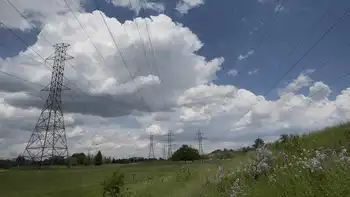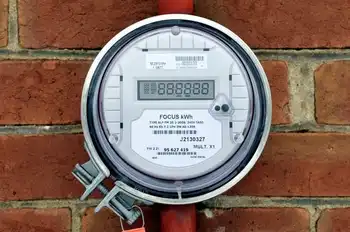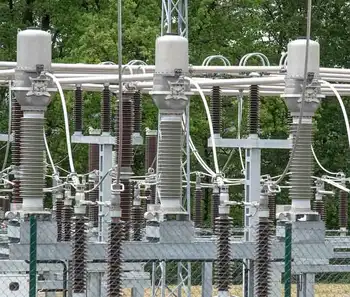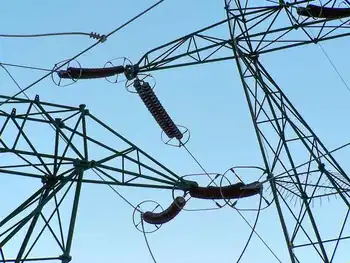New transformer might help prevent long-term outages
- The U.S. electric utility industry has a long and reliable service track record. Long-term outages are rare but serious events. Long-term outages could pose a threat to the economy as well as national security.
The cost to the economy from sustained power outages quickly runs into billions of dollars; approximately 60 percent of the gross domestic product (GDP) is directly tied to electric power. The societal cost is potentially far higher. The interdependencies of other critical infrastructure, such as communications, transportation, and water, on electric power are also a concern for long term outages.
A consortium consisting of the U.S. Department of Homeland Security (DHS) Science & Technology Directorate (S&T), transformer manufacturing company ABB Inc., CenterPoint Energy Inc. and the Electric Power Research Institute (EPRI) have developed a prototype new transformer that could replace a damaged or destroyed transformer in about a week instead of several months, to prevent sustained power outages. Known as a “Recovery Transformer” or RecX, the first prototype has been developed and is located at a CenterPoint Energy substation for testing.
Program Goal
The goal of the Recovery Transformer (RecX) Program is to increase the resilience of the nationÂ’s electric transmission grid by drastically reducing the recovery time associated with extra high-voltage (EHV) transformer outages. The transmission grid is the backbone of our electric infrastructure, providing the long haul delivery of electricity by connecting the generation capacity to the distribution network. There are approximately 80,000 miles of extra high-voltage (EHV) transmission lines in the U.S. EHV transformers are critical components of our nationÂ’s backbone transmission grid, with approximately 90 percent of all power flowing through transmission grid and EHV transformers on its way to the consumer.
Need for the Recovery Transformer
EHV transformers are subject to a number of vulnerabilities that can impact the gridÂ’s ability to rapidly respond to an event that damages a number of EHV transformers. EHV transformers are the components in the grid most vulnerable to sustained outage and are often located in remote substations making them difficult to replace in the event of an emergency. EHV transformers can weigh hundreds of tons and are often too large to transport easily by road. The current process to replace a damaged EHV transformer can take up to two years if a replacement must be constructed from scratch. In some cases, spares are available, but they can take several months to move, put in place and energize. If multiple EHV transformers are damaged simultaneously, the economic and societal threat from the resulting sustained outage would be critical. The Recovery Transformer is designed to increase the resilience of the transmission grid by drastically decreasing the recovery time associated with EHV transformer outages.
The need for a mobile, spare, recovery transformer was first identified by the utility industry after 9/11 as part of the Electric Power Research Institute (EPRI) infrastructure security initiative, and subsequently through the Energy Sector Specific Plan (2007, 2010) under the National Infrastructure Protection Plan (NIPP). In 2008, DHS S&T partnered with the utility industry to sponsor the recovery transformer. DHS S&T is managing the RecX project with EPRI as the principal contractor. Detailed design started in 2008 with close collaboration between EPRI, DHS, and transformer manufacturer, ABB Inc. In 2010 Houston Utility, CenterPoint Energy, agreed to host an installation of the prototype Recovery Transformer at one of their substations.
The Recovery Transformer prototype is designed to replace the most common EHV transformers in the utility power fleet – a 345/138 kV autotransformer. The basis for the RecX design premise is routed in conventional transformer technologies but with an emphasis on making the unit more modular, easily transportable, and quick to install as key priorities. The principal challenge that the prototype designers faced was to reduce the transformer weight and size for transportation purposes while maintaining performance and reliability. The final Recovery Transformer prototype consists of three single-phase units at 345/138kV, 200 MVA per phase. Ancillary equipment, such as bushings, cooling systems, and conservator tanks are designed to be quickly removed from the transformer before shipping, and easily reinstalled once the transformer is set.
The goal of the pilot demonstration is to simulate an emergency scenario to fully test the Recovery Transformer and its deployment concept. The RecX units and its supporting equipment will be transported by road in a series of strategically deployed convoys, from the factory in St Louis, MO to the CenterPoint substation, where utility crews will work around the clock to install, assemble, and prepare the Recovery Transformer units for energization. After energization, the RecX will remain operational in the grid for at least one year to observe, monitor, and validate is performance.
Program Summary
The rapid restoration the Recovery Transformer provides has a direct impact on our nationÂ’s economy, critical infrastructure and national security.
According to this teamÂ’s analysis, the RecX design is a suitable replacement in the event of an emergency to over 90 percent of the transformers in its voltage class.
Conceptually, RecX transformers could be stored at various secure regional locations, designed to the specific voltage levels used in each region and rapidly deployed when needed.
Related News
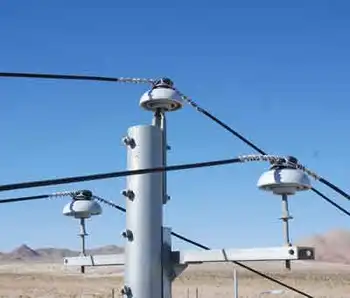
California proposes income-based fixed electricity charges
SAN FRANCISCO - The Public Advocates Office (PAO) for the California Public Utilities Commission (CPUC) has proposed adding a monthly fixed charge on electric utility bills based on income level.
The rate change is designed to lower bills for the lowest-income residents while aligning billing more directly with utility costs.
PAO’s recommendation for the Income Graduated Fixed Charge places fees between $22 and $42 per month in the three major investor-owned utilities’ territories for customers not enrolled in the California Alternative Rates for Energy (CARE) program. As seen below, CARE customers would be charged between $14 per month and $22 a…

